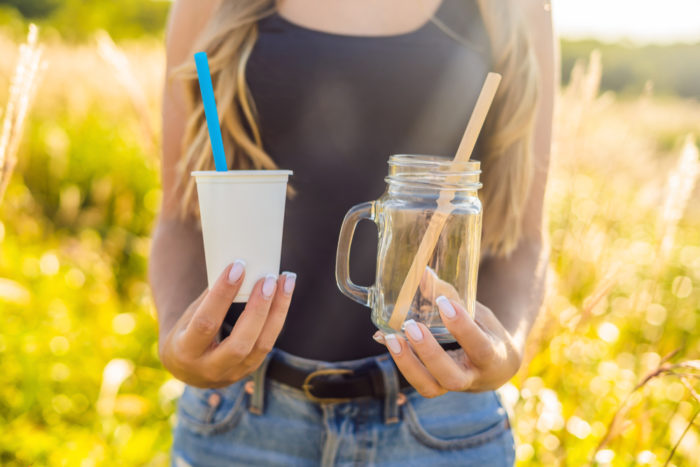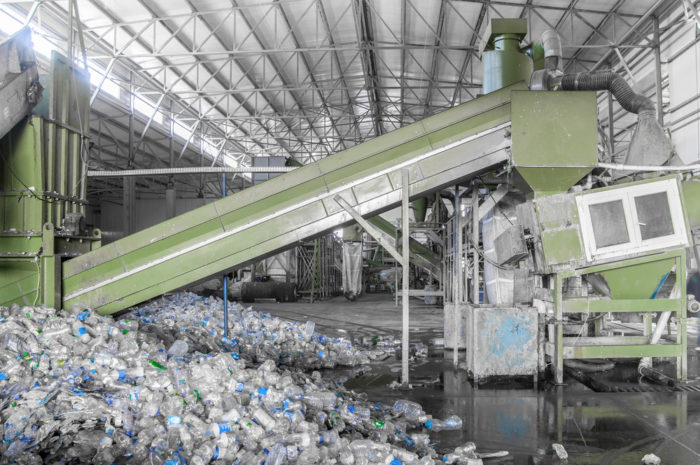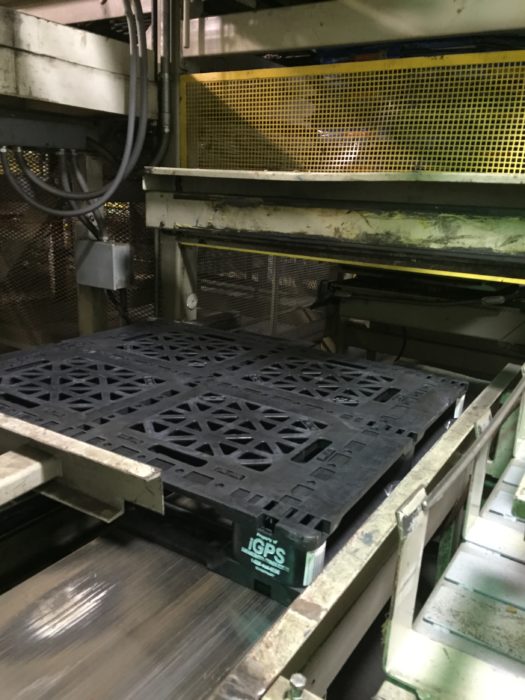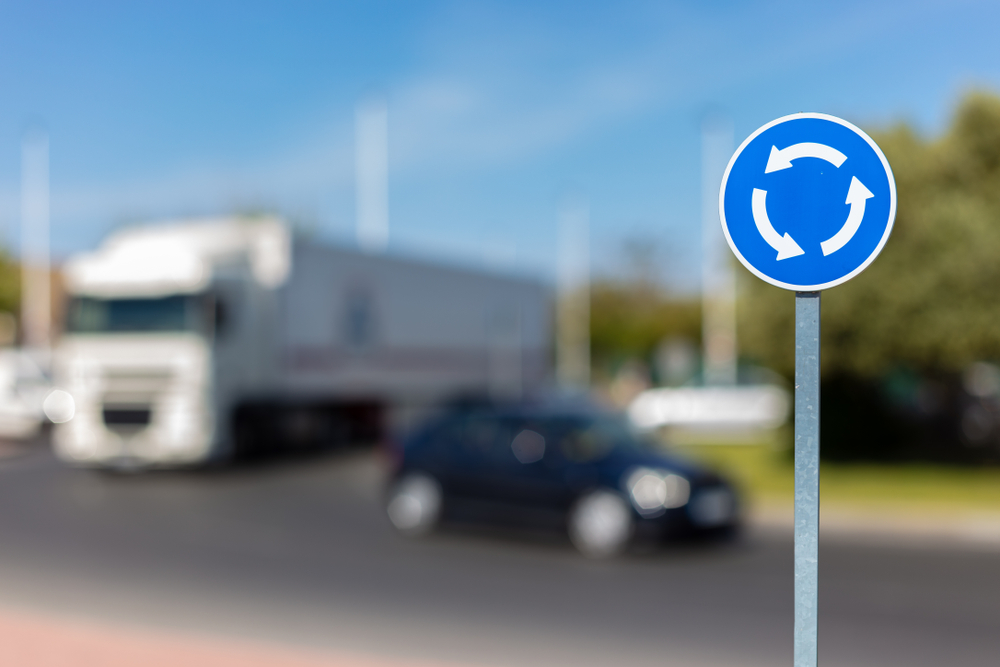Many people stop by a coffee shop or a convenience store almost every day. They pull a styrofoam cup off a stack, pour a cup of coffee, pull a coffee stirrer from a container, and mix sugar and creamer in. Finally, they place a plastic lid on the cup and continue driving to work. When they arrive, they’ll most likely toss the cup and lid into the trash and never think about that cup of coffee again. Sadly, almost every part of that morning ritual is unsustainable. Changing the amount of waste we create everyday requires switching to a circular economy where materials are reused until they can be recycled. Closing this loop and reshaping logistics for the circular economy are tasks that pose a challenge we are still learning how to meet.
The Circular Economy Versus the Linear Economy
 The economy that we are all familiar with is a linear one. It is based on a take-make-dispose plan and flows one way from the manufacturer or producer to the consumer, who uses the product and discards it or its packaging when its lifespan is over. This model is efficient at getting products to consumers; however, it makes no plan to put resources back and makes heavy use of material and energy resources. As a result, in approximately a century, the carbon dioxide in the atmosphere and trash in the environment have built up to a truly alarming degree. The circular economy aims to mitigate these issues through:
The economy that we are all familiar with is a linear one. It is based on a take-make-dispose plan and flows one way from the manufacturer or producer to the consumer, who uses the product and discards it or its packaging when its lifespan is over. This model is efficient at getting products to consumers; however, it makes no plan to put resources back and makes heavy use of material and energy resources. As a result, in approximately a century, the carbon dioxide in the atmosphere and trash in the environment have built up to a truly alarming degree. The circular economy aims to mitigate these issues through:
- Greater Efficiency: In the linear economy, supply chains have distinct beginning and end points, and there is often a large geographic gap between the end of one supply chain and the start of another. Trucks often cover the space between the end of one supply chain and the start of another by traveling empty. Avoiding deadhead trucking reduces fuel expenses and a business’ environmental footprint.
- Recycling: The earliest efforts to make the economy more sustainable involved the reprocessing of waste like plastic, aluminum, and cardboard into new packaging materials. In metals and cardboard, this practice has been highly successful. Plastic recycling has been less so, for a variety of reasons. The circular economy will place greater emphasis on recycling plastic and other materials more easily and more frequently.
- Reuse: The biggest change in the works for a transition to the circular economy is reusable packaging. Packaging will be purpose-built to be collected or returned to a central point where it will be sanitized and filled with new product. This necessitates redesigning packaging to be more robust, setting up a reverse supply chain to collect used packaging, and recalculating logistics to transport heavier packaging more efficiently.
In many ways, rethinking logistics for the circular economy is simple. It is a matter of applying the same lessons and drive for efficiency that corporations have applied to their existing logistics systems for decades. The strategies that present the biggest hurdles are recycling and reuse, both of which require a redesign of common elements of packaging. In fact, the choice that many companies face when they decide to build a circular supply chain is whether they will focus their efforts on recycling their packaging, reusing it, or a blend of both.
The Logistics of Recycling and Reuse
 The issue that has made recycling plastics difficult is the mixing of different types and colors of plastic into the same waste stream. For example, a bottle of laundry detergent might use different types of plastic for the bottle, the spout, and the cap, all of which need to be separated so they enter the appropriate recycling stream. If they are not separated, then the final recycled plastic may have structural properties that make it unpredictable and unsafe for use in some applications. Mixing different colors of plastic in the recycling process can result in unsightly packaging that consumers will avoid. These problems must be addressed, or consumer expectations must change, for the recycling of plastics to enable a circular economy.
The issue that has made recycling plastics difficult is the mixing of different types and colors of plastic into the same waste stream. For example, a bottle of laundry detergent might use different types of plastic for the bottle, the spout, and the cap, all of which need to be separated so they enter the appropriate recycling stream. If they are not separated, then the final recycled plastic may have structural properties that make it unpredictable and unsafe for use in some applications. Mixing different colors of plastic in the recycling process can result in unsightly packaging that consumers will avoid. These problems must be addressed, or consumer expectations must change, for the recycling of plastics to enable a circular economy.
Reusable packaging requires greater durability.
Redesigning product packaging for reuse has its own challenges. Chief among them is that reusable packaging requires greater durability and the ability to be returned to a sanitary state free of contaminants. Initial programs for developing a closed-loop model for consumer packaged goods have used steel that can be run through industrial washing machines. However, steel weighs significantly more than lightweight plastics do and requires more energy to transport. As a result, companies with this model may need several local facilities that serve a small geographic area rather than one or two larger production facilities that serve a continent or region.
Developing Logistics for the Circular Economy
 The challenges of a circular economy are real, but they are not insurmountable. Reuse of packaging was once a standardized model, and one of the terms applied to the circular economy is the “milkman model,” referring to the milkman who would collect and refill glass milk bottles on front steps into the 1950s. Indeed, both recycling and reuse can already be found in some parts of the supply chain and provide an example of how a circular economy can not only work, but be convenient, functional, and profitable as well.
The challenges of a circular economy are real, but they are not insurmountable. Reuse of packaging was once a standardized model, and one of the terms applied to the circular economy is the “milkman model,” referring to the milkman who would collect and refill glass milk bottles on front steps into the 1950s. Indeed, both recycling and reuse can already be found in some parts of the supply chain and provide an example of how a circular economy can not only work, but be convenient, functional, and profitable as well.
High-quality plastic pallets are made of food-safe High-Density Polyethylene (HDPE) which is a strong and durable plastic that can be easily recycled.
Pallet pooling is an example of a closed-loop supply chain model that is already used by large retailers and producers of consumer packaged goods. Instead of being discarded at the end of their transportation legs, reusable pooled pallets are shared among a pool of customers. This means that when pallets arrive at the end of one supply chain, they likely don’t have to be transported far to get to the next. This makes the transportation of pallets more efficient and minimizes deadhead trucking.
When the pallets used in a pooling program are plastic, rather than wood, they provide a model for the sustainable use of plastic. High-quality plastic pallets are made of food-safe High-Density Polyethylene (HDPE) which is a strong and durable plastic that can be easily recycled. A worn plastic pallet can be ground up and the plastic recycled for use in “new” plastic pallets. Unlike wood pallets, which even within a pooling program will end up in landfills at the end of their lifespans, pooled plastic pallets exist in a closed loop. Plastic pallet pooling provides an example of how logistics for the circular economy can reduce waste and support the transition to a circular business model.
iGPS is the market leader in plastic pallet pooling. Our durable rental plastic pallets offer greater efficiency and cradle-to-cradle recycling to support the circular economy of the future. To make the switch, give our team a call at 1-800-884-0225, email a specialist at switch@igps.net, or visit our contact page.



